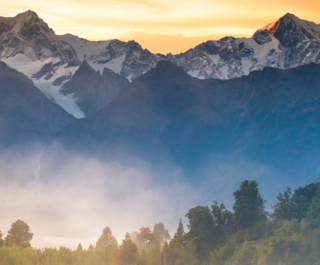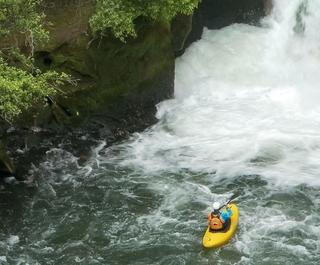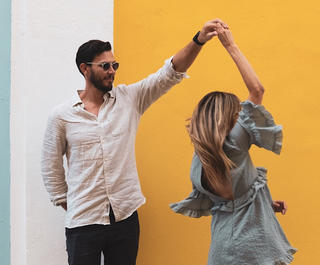
My guide Ling told me that when Thais come to Ayutthaya and Sukhothai, they aim to visit nine temples in one day. “The word nine sounds like the word for progress,” she said, “and they think a quick tour of nine temples might bring them more money.”
I sighed. Any romantic notions I harboured about Buddhist spirituality evaporated in the humid air.
To see nine temples, even in these two Unesco World Heritage cities, would demand a frenzied, whirlwind tour. This time it might not be best to “do as the locals do”.
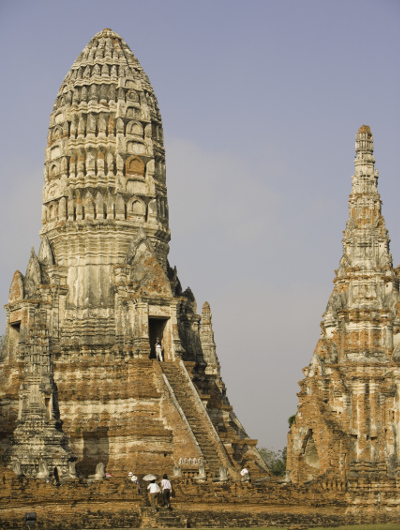 Wat Chai Wattanaram in Ayutthaya (Getty)
Wat Chai Wattanaram in Ayutthaya (Getty)
Indeed, it is the sleepy nature of Ayutthaya and Sukhothai that explains their allure. Thailand’s former capitals exude a slow-paced serenity in contrast to the frenetic modern capital.
.........................................................................................................................................................
Perfect Antidote To Bangkok's Bustle
.........................................................................................................................................................
Cramming in nine temples would defeat the purpose of coming here.
Ayutthaya, the nearer city to Bangkok, is best reached by boat, so I boarded the Anantara Song, a charmingly converted rice barge, at the dock of my riverside hotel.
The journey up the Chao Phraya river was the perfect antidote to Bangkok’s bustle. I gazed at fishermen casting their nets, children plucking a football from the muddy banks, and house dogs lolling on the dockside as chickens scratched in the dust.
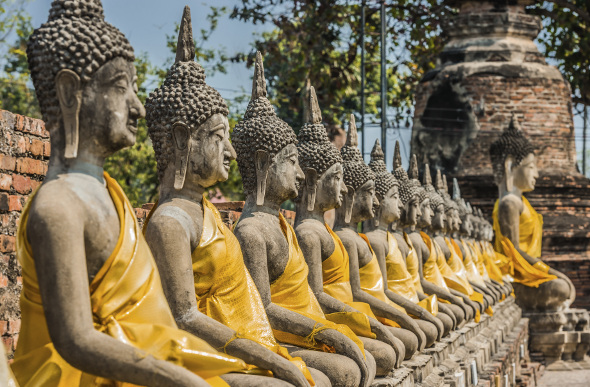 A line of buddhas in Ayutthaya (Getty)
A line of buddhas in Ayutthaya (Getty)
There were also snapshots of modern riverside life. A boat advertising banking services cruised by. There was a floating clinic and mail delivery service. Taxi-boats ferried immaculately uniformed children to school.
We anchored overnight and the river lapped against the vessel’s teak hull. There was a strong sense of heritage on board this 100-year-old rice barge; travelling by slow boat is a wonderful way to explore the country’s past.
Ayutthaya was founded almost 700 years ago and went on to control much of what is today the territory of Thailand. By the 17th century it was a thriving hub of trade and its population had grown to a million, but this golden age ended abruptly when neighbouring Burma ransacked the city.
.........................................................................................................................................................
Do What A Monk Might Do - Have A Think
.........................................................................................................................................................
Today many of the temples lie in ruin after suffering the ravages of historical battles, of time and of looting, but the former wealth and power are still evident.
A classic circuit takes in the highlights, but a good guide may showcase less predictable, yet equally intriguing, sites, such as the elegant colonnaded ruins of Wat Phra Si Sanphet, which reminded me of the Forum in Rome.
At Wat Yai Chai Mongkol, there is a functioning monastery, an impressive reclining Buddha and smaller saffron-draped Buddhas. Locals were making offerings of lotus flowers and incense, and daubing gold leaf on the statues.
“They sometimes ask for good health, but usually they ask for money or to pass an exam,” said Ling with refreshing frankness. “They say, if I pass a test, I’ll give the temple 100 eggs or I’ll run around campus three times.”
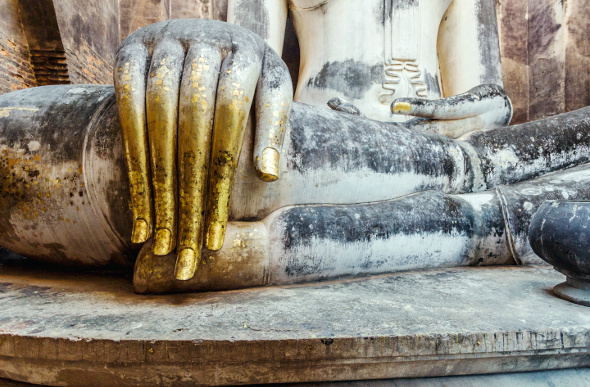 A detail of the giant buddha of Wat Si Chum (Getty)
A detail of the giant buddha of Wat Si Chum (Getty)
The most-prized temple at Ayutthaya is 14th-century Wat Phra Mahathat, with its elegant corn cob-shaped turrets. Nature has taken over here, as it has at Angkor’s Ta Prohm in Cambodia; a sandstone Buddha head peeps out between tree roots.
This is one of the loveliest temples to while away an afternoon. Do what a monk might do: take a seat among the ruins, listen to the buzz of insects and have a think.
From Ayutthaya, I travelled on to Sukhothai by local train. The two-hour delay offered the chance to explore the butter-yellow station, a throwback to colonial times with its slow-turning fans, old-fashioned signage and starlings flitting about the rafters.
There's another jewel in Thailand's crown. Getting To Know Thailand’s Northern Gem – Chiang Mai
While you're there try an island escape Koh Samui – Simply Beautiful
.........................................................................................................................................................
Like Something Out Of Salvador Dali
.........................................................................................................................................................
There was a bleached 6ft-tall photograph of the king on a wall. One couple carried a cage of young rabbits, while their friend took selfies on his iPad. No one complained about the delay. Even the station clock was losing time.
After we finally boarded, it was a pleasant journey through rice fields and against a backdrop of the northern foothills. I had a nap and bowl of Thai green curry (included in the fare) before the train pulled into Phitsanulok. A transfer is necessary to cover the 70km on to Sukhothai.
Founded in 1257, Sukhothai was the first capital of the kingdom (before Ayutthaya). This period was brief – just over a century – but it determined much of Thailand’s future. The territory expanded, Theravada Buddhism flourished, a robust ceramics industry was founded and the Thai script was established.
The seat of power was at Wat Mahathat, with its assembly of spires, columns and detailed bas-reliefs. There were few tourists on the day I visited. I could hear my own footsteps.
I also loved Wat Si Chum: passing through a slender tapering gateway to creep up on a seated Buddha with an other-worldly expression. Its preternatural fingers seemed to melt around its crossed legs like a scene from a Salvador Dali.
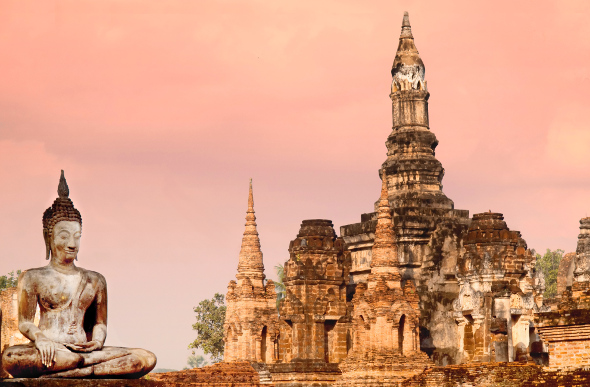 Sunrise at Sukothai (Getty)
Sunrise at Sukothai (Getty)
If it was not for the world-renowned Angkor in neighbouring Cambodia and Bagan in Burma, a great deal more attention would be lavished on Thailand’s historic ruins.
Yet it may, in fact, be a blessing to be sandwiched between these two archaeological wonders.
In spite of Thailand’s magnetism – more than 26 million tourists visited the country in 2013 – most visitors skip the sacred temples of Ayutthaya and Sukhothai, which, hundreds of years on, have managed to retain their intended sense of serenity and spirituality.
When to go
The weather is usually at its best from November to February.
Festivals
Sukhothai is one of the best places to experience the nationwide festival Loy Krathong, which is usually held in November. For nine nights, candles are set afloat on the lakes, and there are sound and light shows and parades.
The World Heritage Site Festival in mid-December is a week-long celebration in Ayutthaya with a nightly sound and light show.
Where to stay
Bangkok: The Siam Bangkok is an elegant new property located on the Chao Phraya river. Guests can be picked up by boat from the hotel’s dock.
Ayutthaya: Iudia stands on the opposite river bank to 14th-Century Wat Putthaisawan; there are eight rooms and two pools.
Sukhothai: Tharaburi is located in the old town with 18 rooms in traditional Thai style, a pool and relaxing restaurant.
Tips
- If time is tight, travel from Bangkok to Ayutthaya by car or train (about 1.5 hours). From Bangkok to Sukhothai, it is a one-hour flight.
- In Ayutthaya, take a night-time tuk-tuk tour around the floodlit temples.
- Hire a bicycle in Sukhothai to enjoy a leisurely ride among the temples, and try to catch the enchanting sound and light show (irregular dates of performance).
- The museums in Ayutthaya and Sukhothai are worth visiting and are good places to spend the hottest time of the day.
- Dress modestly and wear comfortable shoes that are easy to slip off before entering a temple.
- Avoid weekends – the most popular time for domestic tourists – and the midday sun.
This article was written by Michelle Jana Chan from The Daily Telegraph and was legally licensed through the NewsCred publisher network.



